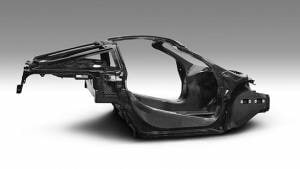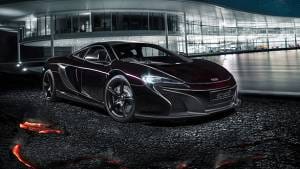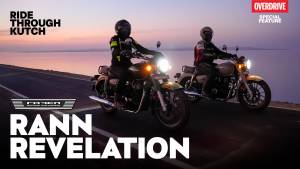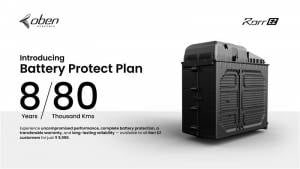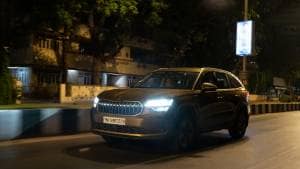Geneva Auto Show 2014: McLaren launches 650S Coupe and Spider
McLaren Automotive has unveiled their latest supercar the 650S at the ongoing Geneva Motor Show. The new car is available in both Coupe and Spider forms priced at 195,250 pounds (Rs 2,01,31,885) and 215,250 pounds (Rs 2,21,94,050) respectively.
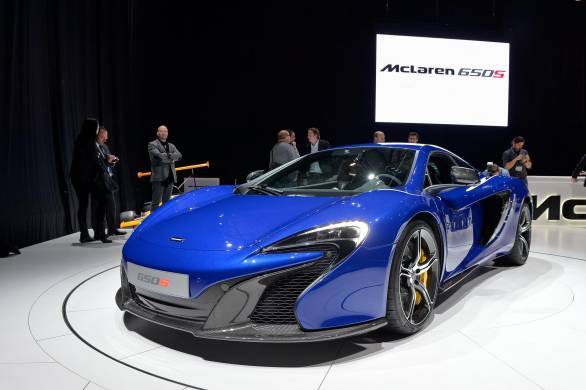 McLaren 650S Coupe
McLaren 650S Coupe
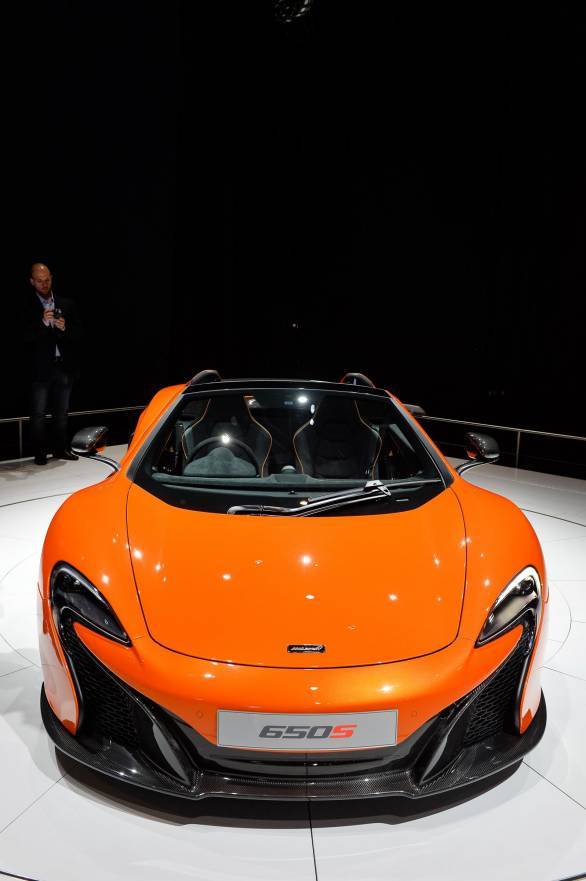 McLaren 650S Spider
McLaren 650S Spider
The 650S has been introduced in to the lineup above the 12C which continues to be produced. The Spider version gets a two piece electrically retractable hardtop which opens and closes in less than 17 seconds and is functional at speeds up to 30kmph.
The look of the 650S is derived from the 'form follows function' McLaren design philosophy giving it a smooth, sleek and beautiful exterior.
Engine doing duty under the hood is McLaren's acclaimed 3.8litre, twin-turbo V8 engine producing 650PS of max power and an impressive 678Nm of torque which is married to a 7-speed SSG gearbox. McLaren says the 650S Coupe completes the 0-100kmph in 3.0 seconds and the 0-200kmph mark is crossed in 8.4 seconds with the acceleration being felt all the way to its top speed of 333kmph. The Spider is also the claimed to hit the double ton in 8.6 seconds with a top speed of 329kmph.
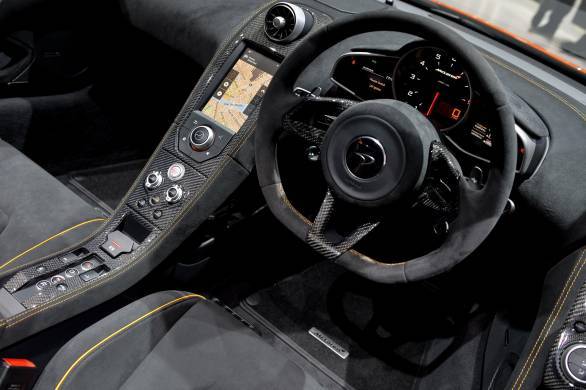 Interiors are luxurious and get full Alacantara trim or optional Nappa leather, four speaker Meridian audio system, IRIS satellite navigation and DAB digital radio.
Interiors are luxurious and get full Alacantara trim or optional Nappa leather, four speaker Meridian audio system, IRIS satellite navigation and DAB digital radio.
The car has several functions to aid handling dynamics and augment driver experience. The chassis itself is a carbon fibre Monocell and features such as ProActive Chassis Control, Brake Steer, McLaren Airbrake and an improved steering system all make this a formidable track car which can also be used for everyday travel.
Interiors are luxurious and get full Alacantara trim or optional Nappa leather, four speaker Meridian audio system, IRIS satellite navigation and DAB digital radio.
FOR PICTURES AND SPECIFICATIONS, CLICK HERE
McLAREN 650S DIALS UP PERFORMANCE AND EXCITEMENT
| Developed to give the enthusiast driver the ultimate in luxury, engagement and excitement on road and track Offers the widest breadth of capabilities of any supercar Design and engineering inspired by the groundbreaking McLaren P1 Joins McLaren's range of supercars above 12C, which continues on sale Coupé and Spider, with electrically retractable hard top, to be available from Spring 2014 launch McLaren Automotive will return to the International Geneva Motor Show this year with its fastest, most engaging, best equipped and most beautiful series-production supercar yet. The McLaren 650S joins the range as an additional model alongside the 12C and sold-out McLaren P1, and learns from both models as well as 50 years of competing in the highest levels of motorsport. Available as a fixed-head Coupé or as a Spider, with a retractable folding hard top, the McLaren 650S promises to redefine the high performance supercar segment, and has been designed and developed to provide the ultimate in driver engagement on the road and on the race track. The 650S badge designation refers to the power output 650PS (641 bhp), - of the unique British-built McLaren M838T twin turbo V8 engine. 'S' stands for 'Sport', underlining the focus and developments made to handling, transmission, drivability and engagement. The maximum power figure ensures the best power-to-weight ratio in its class, at 500PS (493 bhp) per tonne. The design is inspired by the McLaren P1, showcasing a new family design language for the brand. More importantly, the new look follows the McLaren design ethos of 'form follows function', with the front bumper providing a dramatic, yet clean, appearance while the integrated front splitter contributes to increased levels of downforce. This offers a greater level of steering feeling and confidence to the driver on turn-in, while also adding to the agility and handling balance. Unique door blades behind the front wheels, on the leading edge of the dihedral doors, direct air from the trailing edges of the front splitter, further benefiting front-end grip and vehicle balance. Distinctive sculpted side intakes direct air into the efficiently packaged radiators to cool the unique 3.8-litre twin-turbo M838T V8 engine. Maximum torque produced is 678Nm (500 lb ft). 'McLaren is an engineering led company, and we're proud of that,' says McLaren Automotive CEO Mike Flewitt. 'The new design gives important engineering and driver benefits. Yet it's not just about improving the numbers. The McLaren 650S also dials up the design drama and driving excitement.' Key to the McLaren 650S is the fact that the everyday usability and capabilities offered by, and expected of, any McLaren model are not compromised. Despite the power and performance focus, the McLaren 650S boasts an extensive specification list, with an optimised powertrain, braking and suspension systems, as well as a refined and luxuriously equipped cabin. Yet, even with these extra features, the McLaren 650S weighs just 1330kg (dry) 6kg lighter than the 12C. Light weight, as ever, is a core theme of the latest model from McLaren. Performance is class leading for both the Coupé and Spider models: 0-100 km/h (62 mph) acceleration takes only 3.0 seconds, 0-200 km/h (124 mph) takes just 8.4 seconds for the Coupé [Spider 8.6 seconds]. Maximum speed is 333 km/h (207mph) [329 km/h (204 mph) for Spider]. Says Mike Flewitt: 'The McLaren 650S is a multi-purpose, high performance sports car, and is thrilling to drive. No other series-production sports car on sale today offers such a breadth of capabilities. Maximum driver appeal, and driver engagement, is at the heart of this car, as it is with all McLarens. Yet unlike some rivals, the McLaren 650S is not a stripped-out racer. It is faster than many other ultra-sports car rivals, yet there is no compromise in luxury. It has all the refinement and comfort you would expect from McLaren, and all the power and excitement as well. Many McLaren owners do use their cars every day, and frequently drive hard on track days. The McLaren 650S is designed for both. It really is a no compromise option.' The 'no compromise' McLaren 650S is also one of the most efficient models in class, returning 24.2 mpg (11.7 l/100km) on the EU combined cycle, and a CO2 figure of 275g/km. This is testament to the drive by McLaren for continued improvement and class-leading efficiency. The McLaren 650S is launched as an addition to McLaren Automotive range, and sits above the groundbreaking 12C which continues on sale at a more accessible price point. As with the celebrated 12C, and the limited edition McLaren P1ä, the McLaren 650S models use a Formula 1-inspired carbon fibre chassis. Weighing just 75kg, the innovative MonoCell forms the centre of the McLaren 650S and offers advantages in weight, torsional rigidity, durability, safety and quality. These all add to a superior driving experience. Other technologies with links back to the company's Formula 1 rich heritage include full wishbone suspension, mid-engine architecture, Brake Steer for enhanced agility, carbon ceramic disc brakes (standard on the McLaren 650S) and active aerodynamics. In addition to building on the learnings from success on the track, the McLaren 650S also benefits from the groundbreaking technologies fitted to other McLaren models. Active aerodynamics, which feature on both the 12C and McLaren P1, have been further developed and honed to ensure the ultimate performance and ability for the McLaren 650S. The McLaren Airbrake, originally fitted to the 12C and 12C Spider and designed to offer optimised levels of downforce on the rear of the car, now works with greater levels of functionality, and offers a greater degree of stability in a wider range of conditions. 'Everything we've learnt from the McLaren P1ä and the 12C has gone into the McLaren 650S. The result is a car that's faster, more fun and thrilling to drive, yet also more comfortable, luxurious and even easier to enjoy, day-to-day' says Flewitt. 'At McLaren, we are a fast moving company, continually striving for improvements and technical advantages. We always want to push, to improve. That's our Formula 1 heritage and mentality shining through. Always seeking to innovate, to be the class-leaders, to bring new technologies to market as fast as possible.' The McLaren 650S uses a unique version of the award-winning 3.8-litre, twin turbo V8 M838T engine. New pistons and cylinder heads provide a boost in engine power and torque, and these are combined with new exhaust valves and revised cam timing. Further advances have been made to the transmission software to allow faster and crisper gearshifts. Adding to the aural drama in 'Sport' mode is 'cylinder cut' technology, which produces an exhaust flare on upshifts. This is achieved by momentarily interrupting the spark and 'popping' the fuel on re-ignition. This gives a distinctive engine note, as exhaust sound is amplified, without any loss in performance. Under hard acceleration in 'Track' mode, when full performance is required, the McLaren 650S features 'inertia push', which harnesses the built up kinetic energy to deliver an impulse of torque as the next gear is engaged. This approach delivers the next gear before the engine speed has dropped, resulting in continual strong acceleration, with no drop in the rate of acceleration as the driver upshifts. Further optimisation has been made to the McLaren-developed clutch control software, which improves smoothness, predictability and refinement, particularly at low speed, through the seven speed dual clutch gearbox. The pioneering ProActive Chassis Control (PCC) suspension system, developed by McLaren, has been further enhanced for the McLaren 650S. A feature of the system is the ability to adjust the ride and handling modes Normal / Sport / Track in isolation from the drivetrain, which gives complete freedom in terms of ride and handling. These settings, for both powertrain and suspension, have been recalibrated to improve driver engagement. The updates are especially noticeable in Sport mode. New damper mounts offer improved levels of ride comfort and minimise any noise, vibration and harshness carried through into the cabin, while redesigned dampers and springs are coupled with sharper steering. A new lightweight forged '650S' alloy wheel design is fitted as standard on the McLaren 650S, and offers a 6kg weight saving over the standard cast wheel design on the 12C. Finished in silver, and available with an optional stealth or diamond cut finish, the unique design is shod with Pirelli P Zero Corsa tyres to offer optimised roadholding, handling and driver feedback the bespoke 'MC1' branded tyres have been developed alongside the McLaren 650S by McLaren technology partner Pirelli, and offer strong performance in normal road conditions and on track. The dramatic exterior styling includes full LED headlamps derived from the McLaren P1. These provide a distinctive illumination of the road ahead, and echo the signature McLaren 'speed marque' logo in the design. The bonnet is finished with a new McLaren badge, inspired by the badge fitted to the iconic McLaren F1. The rear of the McLaren 650S has been designed to optimise aerodynamics, with a 12C GT3-inspired three-piece bumper. As standard, the interior is trimmed in lightweight Alcantara, while full leather is available. These materials extend to include the full headlining, while contrast colour stitching is also available. Fixed-back carbon racing seats, based on the lightweight design found in the McLaren P1ä, offer superb levels of upper and lower body support, improve driver engagement, and save 15kg. The McLaren 650S is designed to be the best and most engaging driver's car in its class, yet it is not a stripped out road racer. Ride comfort and refinement are to executive saloon standards. The McLaren 650S models are equipped with IRIS satellite navigation with Bluetooth telephony, DAB digital radio in European markets (SIRIUS satellite radio in North America), wireless tethering, audio streaming and voice control as standard, while also offering enhanced levels of optional specification than previously offered. Options include fixed-back carbon racing seats, based on the lightweight design found in the McLaren P1, an electric steering column adjustment assisting ingress and egress, a rear parking camera and extended carbon fibre throughout the interior. McLAREN 650S IN DETAIL INCREASED power and a new look Engineered using 50 years of motorsport knowledge and expertise Aggressive styling provides optimised handling and downforce No compromise combined with everyday usability The McLaren 650S signifies another big step for McLaren Automotive, as the latest addition to the range builds on the technologies and capabilities seen with the 12C and McLaren P1. The distinctive exterior styling reflects a new McLaren family look, optimises aerodynamic performance, while also giving increased road presence and visual drama. The design takes the aerodynamic learnings from the McLaren P1 as the McLaren 650S follows the company mantra of form following function. This sees enhanced levels of downforce, resulting in improved handling balance and increased levels of grip. The new badge designation refers to the maximum power output, 650PS (641 bhp), while the 'S' stands for 'Sport', underlining the focus and developments made to the suspension set up, transmission, drivability and performance. Externally, the badge features on the leading edge of the newly designed aerodynamic door blades. McLaren P1ä-inspired exterior design More dramatic style inspired by the sold-out McLaren P1 Front and total vehicle downforce levels significantly increased Latest LED lighting technology The limited-run McLaren P1ä next generation supercar which quickly sold out was an inspiration behind the design of the McLaren 650S. 'We learnt so many lessons from the McLaren P1ä the most technically advanced supercar ever built in the UK and we wanted to utilise those learnings and bring them to market as quickly as possible,' says Executive Director Product Development, Mark Vinnels. Nowhere is that more apparent than in the exterior design of the McLaren 650S. The front bumper gives the McLaren 650S a dramatic, yet clean, appearance and reflects a similar look to the McLaren P1. A more pronounced integrated front splitter, available in carbon fibre as an option, gives a greater level of steering feeling and confidence to the driver on turn-in, while also adding to the agility and the car's handling balance. The aerodynamic performance of the McLaren 650S is as efficient as the 12C, boasting the same drag coefficient figure, yet the air is being worked harder and more efficiently as it flows over, and through, the functional bodywork. Downforce levels are increased by 24 percent produced at 150mph, while unique door blades, just behind the front wheels on the leading edge of the doors, direct air from the trailing edges of the front splitter, further benefiting front-end grip and vehicle balance. 'The extra downforce provides increased levels of grip which, in turn, makes a noticeable improvement to lap times and it also boosts driver engagement,' explains Chief Test Driver, Chris Goodwin. 'Steering is sharper and more instant, even at low speeds. High speed handling balance on a racing circuit is also improved: the McLaren 650S is fantastically predictable at very high speeds, and the turn-in at high speeds is stellar.' Design Director Frank Stephenson explains he wanted to share the design language of the McLaren P1ä 'our new family face' and take advantage of new technology, such as full LED lights, while working with the engineering demands to create the most efficient and effective design possible. 'The LEDs give a lot more freedom in design. As we did with the McLaren P1ä, we also wanted to reflect the McLaren "speed marque" logo as a new headlamp signature.' The LEDs perform all lighting functions, including dipped and main beam, and direction indicators. As well as giving a more natural colour than xenon or filament lamps, LEDs are more reliable, longer lasting and consume less energy, improving CO2 emissions. The large front splitter, front air intakes and door blades behind the front wheels are all inspired by the style of the McLaren P1ä. According to Stephenson, they also improve 'visual drama'. 'These are dramatic cars to drive. I want to reflect that in the new design.' The front splitter and door blades are finished in palladium grey as standard, but can be specified in carbon fibre, further improving the dramatic appearance and saving a combined 1.6kg. The unique side intakes fitted to the McLaren 650S feed large, efficiently packaged, radiators which help provide the cooling requirements of the mid-mounted, compact engine. The intakes are available in carbon fibre finish, saving a further 1.5kg. Carbon fibre sill panels lift the appearance of the cabin, when the door is opened and are available with 'McLaren' or '650S' branding. At the rear, a new three-piece bumper reflects the design of the successful 12C GT3 racing car, and accentuates the large rear diffuser. The central section of the bumper is finished in palladium grey as standard, but can also be independently specified in carbon fibre, saving 0.7kg. A further 1.1kg weight saving can be made with the optional carbon fibre Airbrake. The engine bay, fully visible on both the Coupé and Spider models, features machined alloy engine oil and coolant caps to enhance the visual appeal. Extended visual carbon fibre upgrades are also available. The McLaren Airbrake now operates with a greater level of functionality providing increased stability. The newly developed system means the Airbrake deploys whenever the car senses extra downforce is required, such as when decelerating or when going over a sharp crest at speed, rather than simply under braking or when manually operated in 'Aero' mode. This ensures optimised levels of downforce over the rear of the car. This function is only active in 'Sport' or 'Track' handling modes. In a straight line, under hard acceleration, the Airbrake automatically lowers, to minimise drag, similar to the DRS function in Formula 1. This is yet another example of the technologies and systems fitted to the McLaren P1ä influencing the McLaren 650S, and of Formula 1 technology being used on McLaren road cars. From launch, the McLaren 650S is available in the full range of exterior body colours, including four new hues developed with technology partner AkzoNobel Storm Grey, Aurora Blue and Mantis Green are added to the 'Special' palette, while Tarocco Orange joins the 'Elite' paint collection. A rear parking camera is located in the mesh between the base of the rear bumper and the diffuser. Working in conjunction with the parking sensors, the system improves ease of reversing, with the IRIS entertainment screen showing the high definition image. THE MOST DRIVER-FOCUSSED CAR IN ITS CLASS Enhanced driver engagement Optimised ride and handling to aid lap times 0-100km/h in 3.0 sec, 0-200km/h in 8.4 sec The focus for the McLaren 650S is to offer the ultimate everyday experience for the driver on road and track. Building on the valuable expertise gained through 50 years of motorsport, and the knowledge taken from the 12C and McLaren P1 programmes, the McLaren 650S further dials up driver engagement through the engine, transmission, suspension and aerodynamics. With a power output of 650PS, and 678Nm of torque, the McLaren 650S provides a noticeable boost in acceleration and, according to Executive Director Product Development Mark Vinnels, 'the raw feeling of acceleration'. 'For us, the most meaningful measure of better performance is a superior lap time. That tests all the truly worthwhile performance parameters such as acceleration, braking, handling, roadholding and driver engagement. It pushes us to improve aerodynamics, downforce, suspension stiffness and in terms of the engine particularly the torque,' Vinnels explains. 'We have made all those improvements to the McLaren 650S,' he continues. 'Nonetheless if your only target is a faster lap time then you simply make a good racing car. To make a car that can produce good lap times AND has a great breadth of usability a car that rides well, is refined, is every day usable that's a much harder challenge. That's exactly what we did with when we launched the 12C. We've done it again with McLaren 650S too. In fact the suspension changes have actually improved overall ride comfort a feature that the 12C has been universally praised for since launch. The 12C has the broadest range of capability in its class, and I'd say by some margin. The range of ability seen on the McLaren 650S is even more diverse. It's quite a lot further along the sports axis but also better on the refinement axis too.' Dialling up driver engagement was a major focus during the development of the McLaren 650S. 'We did a lot of work on enhancing the feel and feedback levels for the driver which, in turn, builds confidence,' says Vinnels. 'We worked to ensure the steering was more precise and has more feel. Even at low speed, the car changes direction keenly this is due to the optimised levels of downforce on the front of the car. With the revisions and enhancements to the engine, we have more power and increased torque, and throttle response is more predictable and instant. Focus was also put on the feel of the carbon ceramic brakes, and the result is a system that operates smoothly and efficiently at low speed around town and on the circuit.' He continued: 'Driver enjoyment is enhanced with faster and smoother gearchanges at speed and in the city, and there is the added drama of engine "flares" on upshifts. The aerodynamic properties of the car, especially with the design of the front end, ensure that the car feels more planted at speed. The feedback the driver receives is always appropriate, and that "appropriateness" is really important. It means, for example, that the vertical acceleration you feel from the seat feels appropriate to the response you get from the steering wheel. It all combines to deliver a really rich and joined-up experience.' As with the 12C, the McLaren 650S also offers executive car-levels of ride comfort, especially in Normal suspension mode. 'That is our goal and the customer anticipation,' says Vinnels. 'It is now a brand expectation from McLaren.' Despite the comfort and refinement of the McLaren 650S, the key numbers underline the performance-focus. The 0-100km/h (62mph) sprint takes just 3.0 seconds. Research of 12C owners show they tend to do higher mileages than most supercar owners. 'Many use their cars every day and do very big mileages. They are also used on track days. Our goal to offer a well-balanced, refined, no compromise supercar, capable of fast lap times is a great performance discipline for the McLaren engineers, and defines the sort of cars we engineer. But it is also put to the test, regularly, by our customers on racing circuits.' The McLaren 650S is as at home on track as it is on the road confirms Chief Test Driver Chris Goodwin. 'We have worked on optimising downforce levels on the McLaren 650S, and the car now dances on the limit with even more controllability than the already well-balanced 12C. The ESP has also been recalibrated to make the intervention a little less aggressive, and the result is a fantastically responsive car at the limit.' INCREASED POWER AND TORQUE FROM MORE RESPONSIVE TWIN-TURBO V8 Efficient 3.8-litre twin turbo V8 engine returns 24.2 mpg and emissions of just 275 g/km Motorsport-inspired technologies and techniques optimise engine performance Bespoke throttle mapping The unique M838T 3.8-litre twin-turbo V8 has undergone significant changes for the McLaren 650S. To produce the required levels of performance and throttle response, new pistons and cylinder heads have been designed, new exhaust valves have been fitted and the cooling circuits have been optimised. The camshaft timings are unique to the McLaren 650S, to further improve throttle response and help reduce CO2emissions. A new exhaust system adds to the aural excitement, and reduces weight. The British-designed and built V8 weighs just 199kg, and is one of the world's most efficient engines, in terms of power per CO2 emissions. As with other areas of the McLaren 650S, technologies and techniques from the world of motorsport offer further performance advantages. These include dry sump lubrication, allowing for higher cornering speeds without oil surge, and a flat-plane crankshaft, which enables the engine to be sited extremely low in the chassis, lowering the centre of gravity and optimising handling responsiveness. The throttle mapping is also bespoke to the McLaren 650S. 'Again, this was an inspiration from lessons learned from the McLaren P1ä,' says Vinnels. 'The IPAS powertrain of the McLaren P1, with the integration of the electric motor and the efficient petrol engine gives instant power, with no lag at all. It is very linear and predictable. We wanted to replicate this experience on the McLaren 650S as closely as possible. The goal with the software was to give an instant feeling of response to any throttle input rather than a sudden boost of turbo torque. It's more progressive. You also need to push the pedal less to get action.' The torque curve also rises over a large rev band (3,000-7,000 rpm), rather than being flat. This helps make the driver experience more engaging and rewarding, says Vinnels. 'In higher gears, particularly, you get more performance more of the time.' FASTER AND SMOOTHER SHIFTS FROM SEVEN-SPEED TWIN-CLUTCH GEARBOX Optimised calibration to smooth gearshifts and reduce shift times Smoother, more predictable low-speed driving Normal, Sport and Track modes all recalibrated for sportier performance 'Cylinder cut' technology boosts aural drama on upshifts 'Inertia push' gives maximum performance on acceleration Driver engagement and superior throttle response were key characteristics set out for the McLaren 650S models. First and foremost, the goal was to design and develop the ultimate everyday driver's car on road and track. 'We wanted the best possible connectivity between driver and car,' notes Engineering Director Carlo Della Casa. Fast and smooth gearshifts were a priority. 'The gearshift speeds have been minimised,' he says. 'This has been achieved through advanced electronics, rather than any hardware revisions. Under hard acceleration, when full power is required from the engine, 'inertia push' is employed. Developed by McLaren, the system harnesses the torque levels of the engine at the point of gear change. To optimise the shift time, and create a 'surge' on acceleration, the engine speed is above the rate of the next gear and ensures no drop in the performance levels as the driver moves through the gears. Della Casa continues: 'Yet it is not just the speed of the shift; it's the emotional engagement with the car.' This is achieved in the McLaren 650S through a momentary cut of the spark, and then igniting the fuel. The technology, known as 'cylinder cut', produces an exhaust flare on upshifts, adding aural drama to the shift. As with the 12C and the McLaren P1, power is delivered through a seven-speed dual clutch 'SSG' transmission, which can operate as fully automatic or, using the steering wheel-mounted rocker paddle shifts, semi-automatic or fully manual. The transmission operates more smoothly, especially noticeable at low speeds and in stop-start traffic in town, and McLaren-developed clutch control software improves low speed predictability, refinement and drivability, as the clutch engages and disengages. It is especially noticeable in Automatic mode. The shifting points in Automatic are programmed to operate as the engine speed increases and under acceleration, rather than vehicle speed. Della Casa explains that this also increases the driving drama, and driver engagement. 'We have fundamentally changed the way the engine and gearbox interact. They now communicate much more efficiently and effectively, resulting in sharper responses, and more driving drama.' Three different powertrain settings are available Normal, Sport and Track. All have been calibrated specifically for the McLaren 650S, to enhance driver engagement and feel, and are especially noticeable in Sport mode. Throttle response and gear shifting have been optimised, with shifts being made either pulling or pushing the paddles behind the steering wheel as with a modern Formula 1 car. Launch Control and Winter modes can both be selected on the Active Dynamics panel. MORE RESPONSIVE, YET MORE COMFORTABLE PCC SUSPENSION Firmer spring and damper rates to optimise ride and handling Sharper steering with improved driver feedback Revised damper mounts designed to improve cabin atmosphere and reduce chassis vibration Ride comfort and roadholding have been boosted with the McLaren 650S through firmer damper and spring rates. Firmness of the front springs have been increased by 22 per cent, and 37 per cent at the rear, giving a more hunkered down attitude and a more securely planted feel. 'There's even less float than with the 12C, which was a class-leader in this field, and these revisions give and even greater connection between car and road,' notes Executive Director Product Development Mark Vinnels. Efforts have focused on minimising noise, vibration and harshness inside the cabin of the McLaren 650S, with revised damper mounts ensuring class-leading ride comfort, while impacts being fed through to the incredibly rigid carbon fibre MonCell chassis are kept to a minimum through revisions to the top bushes. These methods result in a quiet and smooth ride. 'The stiffness of the carbon chassis is a key reason why the 12C and McLaren P1ä handle so superbly. But there is no spring or 'give' with carbon, so suspension bushing is important to reduce harshness,' says Vinnels. The steering system is shared with the 12C, but feel is even greater as a result of the increased levels of downforce produced by the McLaren 650S. This provides sharper turn-in, with greater precision at low speed and balance and feedback as the speed increases. The groundbreaking McLaren ProActive Chassis Control (PCC) which includes active damping was first fitted to the 12C, and continues to be honed to offer an uncompromising ride quality, whether on road or track. The McLaren 650S is fitted with a unique calibration of the system, more focused towards a firm and sporty ride than previous iterations, and is designed to reduce roll and increases ride suppleness compared with conventional suspension systems. The dampers are interconnected hydraulically and linked to a gas-filled accumulator, providing adaptive responses depending on road conditions and driver preference. It allows for precise roll control in corners while decoupling the suspension in a straight line for excellent wheel articulation and compliance. This system does away with the more conventional mechanical anti-roll bars. These are a staple of all other high-performance sports cars, and a reason why traditionally all other sports cars ride with such low speed firmness and often discomfort. As with the powertrain, but independent from it, the suspension system can be adjusted between Normal, Sport and Track. Compared with the 12C, the suspension is firmer on all settings, although the difference is especially noticeable in Sport. Normal is the desired choice for most road use, if executive car-like levels of comfort are required. Chief Test Driver Chris Goodwin explains: 'It is the perfect setting for a high performance sports car for the vast majority of occasions never unsettled, just great to drive.' Brake Steer is another technology which boosts the capabilities and agility of the McLaren 650S. Initially developed by McLaren for Formula 1 and introduced during the 1997 season, it was quickly banned as it was seen to offer a competitive advantage. The system aids cornering by bringing the vehicle's nose into the apex by applying braking force to the inside rear wheel, enabling the driver to brake later and get on the power earlier. It offers the same benefits as a 'torque vectoring' differential, but by using the same hardware as the Electronic Stability Control (ESC) system, it can reduce understeer, and help optimise lap times and driving precision. Wishbone suspension, like a Formula 1 car, is used on each four corners of the McLaren 650S. It is attached to the revolutionary carbon fibre MonoCell the perfect platform to ensure predictable suspension behaviour, owing to its rigidity and manufacturing precision. The carbon fibre chassis shared with the 12C and 12C Spider models is the Formula 1-inspired tub that is 25 per cent stiffer than a comparable aluminium chassis, and has an even greater margin of superiority over steel. It is also stronger and safer in a crash, acting as a safety survival cell, as it does in Formula 1. It weighs just 75 kg much lighter than a metal chassis, as used by nearly all rivals. It is also more durable than a metal chassis, and its greater dimensional accuracy improves build quality and the predictability of its performance. There are also advantages in ease of repair. Front and rear aluminium extrusions and castings are designed to absorb impacts and are easy to fix. Cars with full aluminium or steel chassis use their structure to absorb and crumple on impact, causing more damage and expense to the whole structure. McLaren is a renowned carbon fibre pioneer, pushing the potential of the groundbreaking material for more than 30 years. In 1981, it introduced the carbon monocoque to Formula 1 with the launch of the MP4/1, which revolutionised the sport. This was followed in 1992 with the legendary McLaren F1, which was the first road car to use a carbon chassis and body. UPGRADED STOPPING POWER AND BESPOKE TYRES Carbon ceramic brakes as standard Unique design five-spoke lightweight forged '650S' alloy wheels Specially developed performance-focused Pirelli P Zero Corsa tyres fitted as standard A high performance braking system and tyres are core to the capabilities of any supercar. As standard, the McLaren 650S has a performance set up with carbon ceramic brakes fitted behind a new alloy wheel design, shod with bespoke Pirelli P Zero Corsa. Close collaboration with Pirelli, the exclusive tyre technology partner of McLaren, saw the development of the 'MC1' branded tyres integrated into the engineering programme for the McLaren 650S to ensure optimised performance in all situations, and tyres that provide superior roadholding, ride comfort and ability. Pirelli P Zero tyres are available as a no cost option. 'We worked very hard to make the driver feel of the McLaren 650S second to none,' says Engineering Director Carlo Della Casa. 'As a result, we have carbon brakes with fantastic feel which are predictable; performance is very linear and they are easier to modulate at low speed, while being more progressive at high speed. The lessons learnt from the McLaren P1ä really helped in this area. The braking performance of this car is outstanding, assisted by the active Airbrake with increased functionality, which optimises downforce on the rear wheels under heavy braking.' As part of the unique calibration of the system, the pedal boost pressure is unique to the McLaren 650S, and adjustments have been made to the ABS system to make its intervention less aggressive. A new design five-spoke lightweight forged '650S' alloy wheel is unique to the model. They are available in silver, stealth black or diamond cut finishes, 19" x 8.5"J at the front, and 20" x 11" J at the rear. REFINED AND LUXURIOUS CABIN Luxuriously appointed cabin features high level of specification, providing comfort and usability Refined and purposeful, rather than 'stripped out' cabin Optional electric steering column ensures optimised driving position and improves cabin ingress and egress McLaren P1ä-inspired lightweight carbon fixed-back seats optional Despite its sporty, high performance capability, the McLaren 650S is no stripped-out hardcore racer. The interior is the most refined and luxuriously appointed production McLaren model to date. As standard, the cabin features full Alcantara trim, with a leather -trimmed steering wheel. An Alcantara finish for the steering wheel is still available, as an option, and this new finish helps improve steering feel. Two new semi-aniline leather colours, Arabica Brown and Midnight Blue, are available from launch, as is luxurious Nappa leather renowned for its softness and durability. The roof lining is also available in semi-aniline or full Nappa leather, while contrast stitching can also be specified, including for the steering wheel. This enhanced specification does not compromise the overall weight of the McLaren 650S however. Efforts have been made to keep weight to a minimum, employing further learnings from the McLaren P1 programme. Lightweight carbon fibre trim panels compliment the interior finish, enhancing the sports style. Carbon fibre can also be ordered for door inserts, the rear capping panel, quarter panels and the lower part of the B-pillars. Sportier features, such as lightweight carbon fibre fixed-back racing seats based on the design of the seats in the McLaren P1ä are also available. The Alcantara, carbon interior panels and carbon-backed seats all save weight: the carbon seats alone save 15kg (7.5 kg each). According to Chief Test Driver Chris Goodwin, the racing seats also further improve the man/machine connectivity: 'The McLaren 650S prioritises driver engagement, and the McLaren P1ä-based carbon seats really add to the feeling of driver involvement.' Although the backrest is fixed, the seat is fore-aft adjustable, and the whole unit can tilt. 'What's truly impressive about the McLaren 650S,' adds Goodwin, 'is that here is a car with all the refinement people have come to expect from a McLaren, but has more performance than most of the stripped-out road racers offered by our rivals. So it's faster, more driver-focused, more thrilling yet also dials up comfort, refinement and specification levels.' An electric steering column is now available, which includes a 'comfort' mode to aid ingress and egress, and electric seats with a memory function. All-round visibility in the McLaren 650S is excellent for a mid-engine high performance sports car. Intelligent and efficient packaging has allowed the car to be extremely compact, with the engine positioned low in the chassis. This ensures optimum weight distribution, but also means rear visibility is not compromised. At the front, the pedals are directly in front of the driver, with no offset unlike many rivals, whose offset pedals can cause driver discomfort, especially on long drives. Optimised audio system by Meridian Upgrades and enhancements continue throughout the cabin of the McLaren 650S, with satellite navigation and DAB digital radio (European markets / SIRIUS satellite radio in North America) now fitted as standard. A second generation IRIS telematics system further simplifies vehicle commands, and reduces the number of switches and controls in the cabin. As with the systems in the McLaren P1 and 12C, IRIS is configured to work in portrait, not landscape mode which is more intuitive. With this orientation of the screen, it means the driver and passenger sit closer together, optimising weight distribution. The McLaren 650S as standard is equipped with a four-speaker Meridian audio system, with two speakers encased within each door. The Meridian Surround Sound Upgrade may be selected as an option, which adds three further full-range speakers - front centre and two rear. In line with this, the amplifier changes to a seven-channel unit, providing increased power output and greater control over the audio settings, allowing front to rear fader control and configurable EQ settings to suit broader user preferences. Within European markets digital audio broadcasting offers greater audio clarity and exclusive radio stations when compared to traditional AM and FM. Stations are simpler to find as they're ordered by name rather than being based around frequency and greater details of what you're listening to is available on screen. SIRIUS satellite radio capability is fitted as standard for all McLaren 650S models in North America. OPEN-TOP McLaren 650S SPIDER JOINS GENEVA GLOBAL DEBUT New McLaren 650S Spider just as engaging on road and track as fixed-roof Coupé 0-100km/h (62 mph) takes 3.0 seconds, 0-200 km/h (124 mph) in 8.6 seconds No reduction in torsional strength due to unique carbon fibre MonoCell chassis; similar weight, too Two piece roof can be raised or lowered in less than 17 seconds on the move at speeds up to 30 km/h (19 mph) The new McLaren 650S is available in Coupé and Spider bodystyles. The McLaren 650S Coupé has a fixed roof and glass engine cover, while the Spider features a two-piece Retractable Hard Top (RHT) that can be automatically raised or lower in less than 17 seconds. The roof can be activated while stationary or at any speed up to 30km/h (19mph). The new McLaren 650S Spider is a no compromise open-top high performance sports car. It is mechanically identical to the McLaren 650S Coupé, and offers the same performance, handling and driver enjoyment. The secret of its success is its industry-leading carbon fibre MonoCell chassis, which needs no extra strengthening to provide the necessary rigidity or safety when developing a convertible. This keeps any weight increase to a minimum, meaning the McLaren 650S Spider offers all the enjoyment and driver appeal of the fixed-roof sibling but with the added appeal of wind-in-the-hair top-down driving. The 0-100 km/h (62 mph) sprint takes 3.0 seconds, the same as the Coupé, and 200 km/h (124 mph) is reached in 8.6 seconds, only 0.2 seconds shy of the fixed-head model. Maximum speed is 329 km/h mph (204 mph). Fuel consumption and emissions remain the same for the Spider, returning 24.2 mpg (11.7 l/100km) on the EU combined cycle and 275 g/km. As with the 12C Spider, the McLaren 650S Spider uses a heated glass rear window, operating independently of the roof. With the roof down, the rear window acts as a wind deflector, reducing cabin buffeting. Roof up, the rear screen can be lowered to allow more engine noise and driving drama into the cabin, and for a semi-open top driving experience even when it's raining. When down, the roof is stowed beneath a body-coloured hard tonneau cover incorporated in the twin rear buttresses. With the roof raised, the area beneath the tonneau cover can be used as additional luggage space. A roll over protection system includes a steel structure within each of the rear buttresses to absorb any impact and protect occupants. An 'active' pop-up system was ruled out as it would have added weight. The overall weight of the McLaren 650S Spider is only marginally greater than the 650S Coupé. Due to the inherent strength of the carbon fibre MonoCell chassis, there is no need for additional strengthening, and therefore weight, to be added. The total weight is 1,370 kg (dry), an increase of only 40 kg, and less than any other car in its class. The weight comes from the Retractable Hard Top and roof mechanism. Inside the cabin, the detail changes of the McLaren 650S Spider extend to both the audio and climate control systems. Audio output changes when the roof is open to compensate for extra external noise while the climate control adapts when the roof is lowered. The audio system, developed by bespoke British hi-fi specialists Meridian, optimises the music output depending whether driving with the roof in place, or stowed. Meridian was involved throughout the development of the audio system to ensure optimised audio quality. The recalibrated Automatic Volume Control (AVC) and Automatic Tone Control (ATC) systems, first shown in the 12C Spider, are present in the McLaren 650S Spider. Individual speakers are automatically adjusted to take into account increases in external sound. The climate control system is also recalibrated to automatically adjust when the roof is lowered. Airflow to the windscreen is reduced and, instead, redirected to the lower cabin vents. Fan speed also responds to vehicle speed, to maintain the desired temperature. TECHNOLOGY PARTNERS The development, engineering and manufacture of the McLaren 650S were made possible through close collaboration with world-leading technology Partners. McLaren Automotive works closely with world leading companies to provide specialist expertise, technology and technical support. These include Akebono, AkzoNobel, ExxonMobil, Pirelli, SAP and TAG Heuer. McLaren and Mobil 1 optimise engine performance on and off track ExxonMobil ensures each groundbreaking McLaren models benefit from the same technical commitment and expertise as the McLaren Mercedes Formula 1 team. In 2014, the McLaren 650S becomes the fourth McLaren road car model to be factory-filled with Mobil 1 New Life 0W-40. The high technology engine lubricant has an optimum combination of synthetic base oils designed to meet the high performance engine demands. The product's advanced formula contains additives specially developed to better protect the engine by preventing build-up on critical engine parts, allowing McLaren engines to run like new after thousands of miles, even in the harshest driving conditions. Tyres developed with Pirelli The McLaren 650S is equipped as standard with Pirelli P Zero Corsa tyres - 235/35 R19 at the front, and 305/30 R20 at the rear. As with the 12C and 12C Spider, the development work undertaken has led to a brand new evolution of the P Zero Corsa tyre, branded 'MC1', specifically tailored to match the characteristics of the 650S. These have been developed and produced using the latest technologies, both in terms of materials and processes. The profile of the asymmetric front tyres on the McLaren 650S optimises aerodynamic performance and, with the new design of the sidewall, the drag coefficient of the P Zero Corsa tyres has improved by five per cent. This improves fuel consumption without compromising the driveability and roadholding in wet conditions. The development work on the profile of the front tyres has also led to an increase in the rigidity of the tread itself by around 13 per cent, enhancing all-round tyre performance. The compounds used for the new McLaren 650S tyres are also state-of-the-art, having been derived from Pirelli's Formula 1 experience and other motorsport campaigns: hard-wired into the Italian firm's DNA for more than 100 years. The Pirelli P Zero, a tyre more tailored towards comfort and more day-to-day driving, can be fitted as a no cost option, while Pirelli has also developed Sottozero 3 winter tyres for the McLaren 650S. 50 years of McLaren Last year 2013 McLaren turned 50. The company, founded by New Zealand-born engineer and racing driver Bruce McLaren, has been at the pinnacle of world motor sport ever since. It has gone on to win more than 180 races in Formula 1, 12 driver world championships and eight constructor championships. Legendary drivers, who saw success in McLarens, include Emerson Fittipaldi, James Hunt, Niki Lauda, Alain Prost, Ayrton Senna, Mika Hakkinen, Lewis Hamilton, and Jenson Button. McLaren's first-ever Grand Prix victory driven by Bruce McLaren was at the 1968 Belgian Grand Prix, at Spa-Francorchamps. Since that day, the young New Zealand-born entrepreneur, engineer and racer has left a long-lasting legacy, and the team bearing his name has become one of the most successful in global motorsport. McLaren cars have won the Indianapolis 500, were the dominant team in the American Can Am sports car series in the 60s and 70s, and claimed outright victory at the gruelling 24 Hours of Le Mans. Bruce McLaren was killed testing a new Can Am sports racing car at Goodwood in 1970. That tragedy did not lessen the McLaren team's desire to win: that year they won nine out of the 10 Can Am races. That same year Bruce was hoping to launch McLaren's first road legal sports car, the M6GT. Like all subsequent McLaren road cars, the M6GT was super light and blisteringly quick. Bruce was hoping to enter the M6GT in sports car racing but, at the last minute, the FIA changed the rules for the World Championship of Makes, increasing the minimum number of cars needed for homologation. The M6GT programme was abandoned, although one car served as Bruce's personal transport until his death. Despite the death of its founder, there was no let up in McLaren's success, or its innovations. In 1981, it launched the first carbon monocoque Formula 1 car, the MP4/1, in which John Watson won the British GP that same year. In 1988, with the MP4-4 and legendary pairing of Alain Prost and Ayrton Senna as drivers, McLaren won 15 of the 16 races the most dominant performance, by a single team, in Grand Prix history. Its first road car, after the aborted M6GT, was the Gordon Murray-designed McLaren F1, shown to the world in1992. It was the world's first road car with a carbon chassis and body. It was feted as the fastest, most technically advanced and best driver's car in the world. The 12C was launched in 2011, the first car from the new McLaren Automotive division, whose cars are developed and built alongside the Formula 1 cars in Woking, England, and was followed the following year by the convertible 12C Spider. . Most recently, the limited edition McLaren P1 was launched, and each of the 375 examples were quickly sold out. Using 50 years of Formula 1 expertise, the McLaren P1 was the first of the next-generation high performance sportscars, with a twin powerplant powertrain producing 916PS (903 bhp). A highly efficient 3.8-litre twin turbo petrol engine, producing 737PS (727 bhp) couple with a lightweight electric motor generating (179PS (174 bhp) resulted in a 0-300km/h sprint of 16.5 seconds 5.5 seconds quicker than the legendary McLaren F1. The new McLaren 650S Coupé and 650S Spider will be built at the McLaren Production Centre (MPC) alongside the McLaren P1ä, 12C and 12C Spider. The £40 million Foster + Partners-designed MPC is adjacent to the McLaren Technology Centre (MTC), where all McLaren Automotive and McLaren Formula 1 cars are designed and developed. The manufacturing facility was opened in November 2011 by UK Prime Minister David Cameron and McLaren Group Chief Executive Officer and Chairman of McLaren Automotive, Ron Dennis. By the middle of this decade, McLaren Automotive will be producing a range of premium carbon-based high performance highly efficient sports cars in Woking. | |
